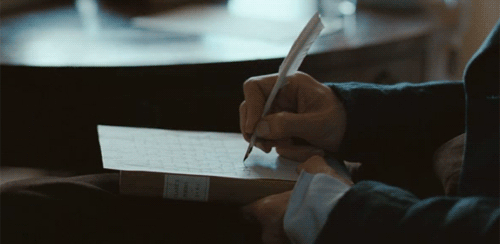The Medieval Period (455 CE-1485 CE)
INTRODUCTION TO THE MEDIEVAL PERIOD
Medieval Literature is defined broadly as any work written in Latin or the vernacular between c. 476-1500, including philosophy, religious treatises, legal texts, as well as works of the imagination. More narrowly, however, the term applies to literary works of poetry, drama, romance, epic prose, and histories written in the vernacular, though some histories were in Latin.
While it may seem odd to find histories included with forms of fiction, it should be remembered that many 'histories' of the Middle Ages contain elements of myth, fable, and legend and, in some cases, were largely the creations of imaginative writers.
LANGUAGE AND AUDIENCE
Literary works were originally composed in Latin, but poets began writing in vernacular (the common language of the people) as early at the 7th century. Vernacular literature was further popularized in Britain in the Kingdom of Wessex by Alfred the Great (r. 871-899) in an attempt to encourage widespread literacy, and other regions then followed suit.
The Norman Conquest of 1066 established French as the language of literature and transformed the English language from Old English (in use c. 500-1100) to Middle English (c. 1100-1500). The stories written during both these eras were originally medieval folklore, tales transmitted orally, and since most of the population was illiterate, books continued to be read out loud to an audience. The aural aspect of literature, therefore, affected the way it was composed. Writers wrote for a performance of their work, not a private reading in solitude.
A SHORT HISTORY OF THE MEDIEVAL ILLUMINATED MANUSCRIPTS
SUBCATEGORIES OF THE MEDIEVAL PERIOD
I. THE OLD ENGLISH (ANGLO-SAXON) PERIOD (428-1066 CE)
The so-called "Dark Ages" (455 CE -799 CE) occurred after Rome fell and barbarian tribes moved into Europe. Franks, Ostrogoths, Lombards, and Goths settled in the ruins of Europe, and the Angles, Saxons, and Jutes migrated to Britain displacing native Celts into Scotland, Ireland, and Wales. Early Old English poems such as Beowulf, The Wanderer, and The Seafarer originated sometime late in the Anglo-Saxon period. The Carolingian Renaissance (800- 850 CE) emerged in Europe. In central Europe, texts include early medieval grammars, encyclopedias, etc. In northern Europe, this time marks the setting of Viking sagas.
II. THE MIDDLE ENGLISH PERIOD (c. 1066-1450 CE)
In 1066, Norman French armies invaded and conquered England under William I. This marks the end of the Anglo-Saxon hierarchy and the emergence of the Twelfth Century Renaissance (c. 1100-1200 CE). French chivalric romances--such as works by Chretien de Troyes--and French fables--such as the works of Marie de France and Jeun de Meun--spread in popularity. Abelard and other humanists produced great scholastic and theological works.
III. Late or "High" Medieval Period (c. 1200-1485 CE)
Canterbury Tales manuscript This often-tumultuous period is marked by the Middle English writings of Geoffrey Chaucer, the "Gawain" or "Pearl" Poet, the Wakefield Master, and William Langland. Other writers include Italian and French authors like Boccaccio, Petrarch, Dante, and Christine de Pisan.
MEDIEVAL PERIOD WRITERS
1. The Author of Beowulf
2. Geoffrey Chaucer
3. Margery Kempe
4. Sir Thomas Malory
 |
| BEOWULF |
.jpeg) |
| GEOFFREY CHAUCHER |
.jpeg) |
| MARGERY KEMPE |

.gif)



Comments
Post a Comment